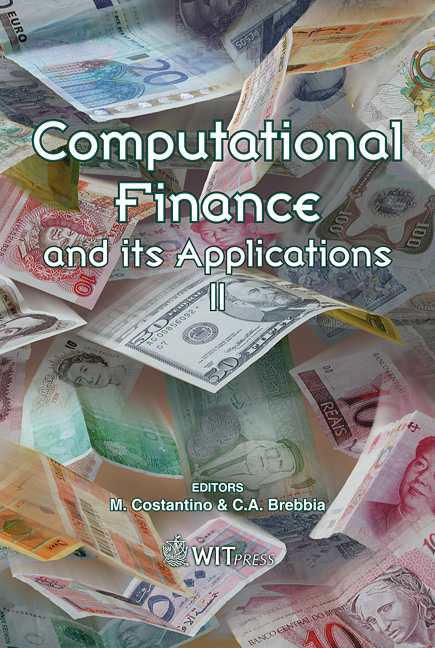Herd Behaviour As A Source Of Volatility In Agent Expectations
Price
Free (open access)
Transaction
Volume
43
Pages
11
Published
2006
Size
507 kb
Paper DOI
10.2495/CF060131
Copyright
WIT Press
Author(s)
M. Bowden & S. McDonald
Abstract
Herd Behaviour is often cited as one of the forces behind excess volatility of stock prices as well as speculative bubbles and crashes in financial markets. This paper examines if social interaction and herd behaviour, modelled within a multi-agent framework, can explain these characteristics. The core of the model is based on the social learning literature which takes place in a small world network. We find that when the network consists entirely of herd agents then expectations become locked in an information cascade. Herd agents receive a signal, compare it with those agents with whom they are connected, and then adopt the majority position. Adding one expert agent enables the population to break the cascade as information filters from that agent to all other agents through contagion. We also find that moving from an ordered to a small world network dramatically increases the level of volatility in agent expectations and it quickly reaches a higher level (at which point increasing the randomness of the network has little effect). Increasing the influence of the experts, by increasing the number of connections from these agents, also increases volatility in the aggregate level of expectations. Finally it is found that under certain network structures herd behaviour will lead to information cascades and potentially to the formation of speculative bubbles. Keywords: social learning, herd behaviour, small world networks, information contagion, volatility, information cascades. 1 Introduction Herd Behaviour is probably one of our most basic instincts and one we easily assume. Further when individuals are influenced by this it creates a first order effect [1]. Intuitively this results in herd behaviour having a potentially
Keywords
social learning, herd behaviour, small world networks, information contagion, volatility, information cascades.





